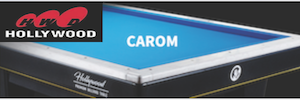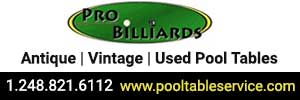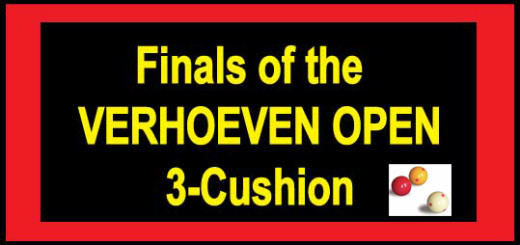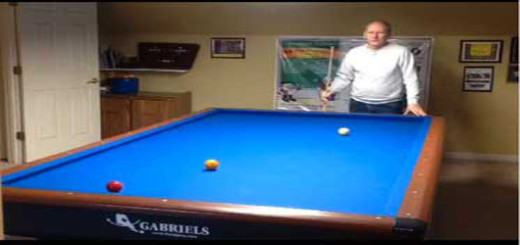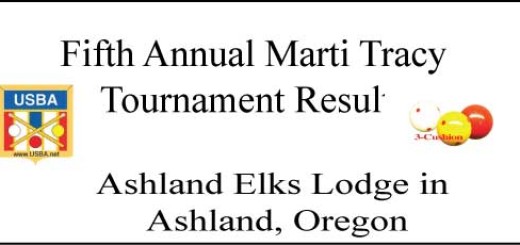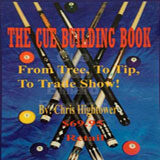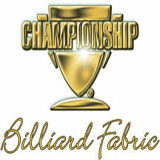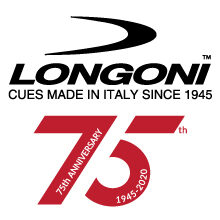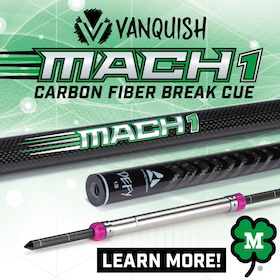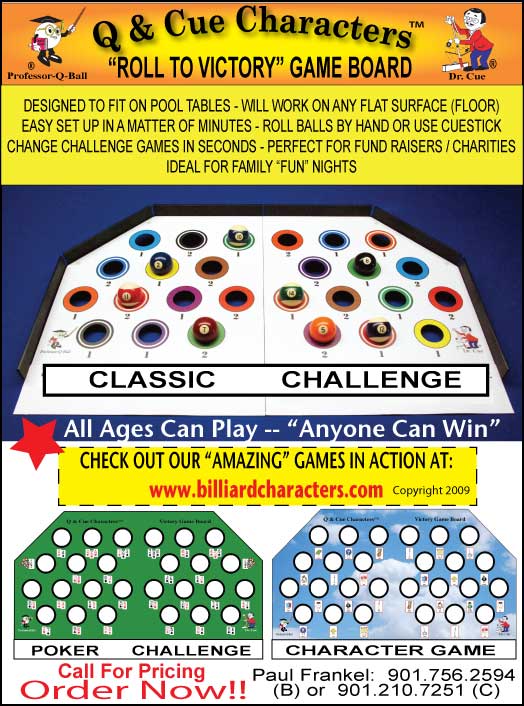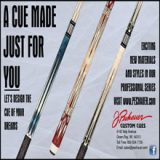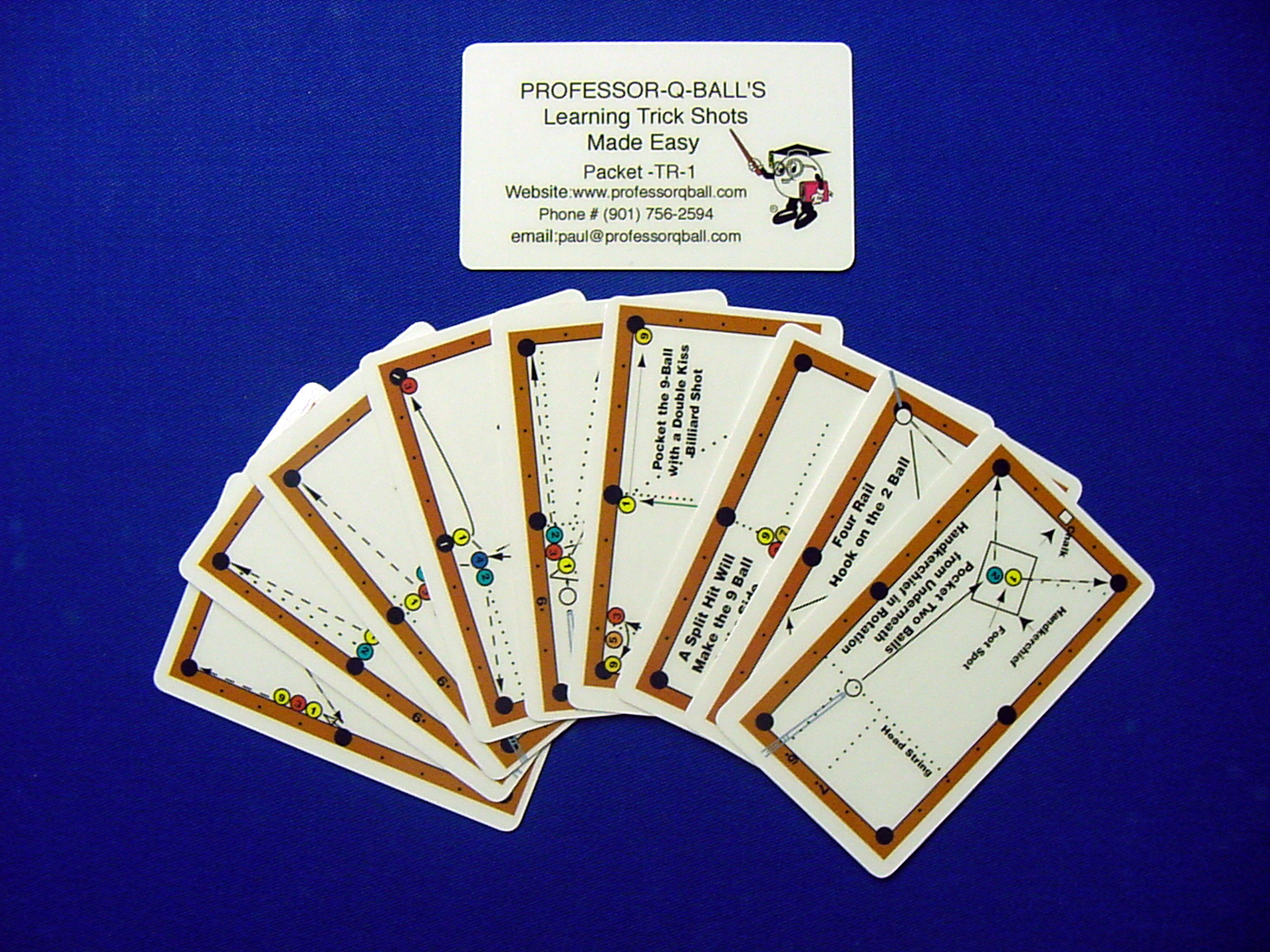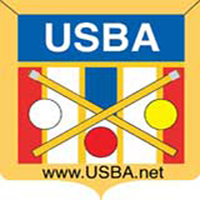The stick we never seem to be able to stick with By Bert van Manen
The stick we never seem to be able to stick with.
By Bert van Manen
Our prized posession, our trusted friend, the tool of our craft. Most of us even own more than one, and they are good ones. We are like a chef and his knives, or a Tiger and his woods. Billiard players relate to their cue as to their car: not only should it get them from A to B, it should also tell the world who they are.
So this is what we do: we buy a good cue, and then a better one. A few years later: another one, even better still. We are adults for a while, realising the rest is up to us, it’s not going to be the cue’s fault from now on. This is our stick, we are proud of it. Then one day, there is a cue brand that convinces us they have made a significant improvement of some sort. A world class player uses their cue, and his game is fingerlickin’ good. We are a kid again. We want that cue.
Will the new and improved stick give us an edge? Will we play better? The answer HAS to be yes, otherwise we would be spending hefty amounts of money on an illusion, right?
Does a cue ADD anything to your game? Sorry, no. A cue only TRANSMITS: your aim, and your stroke. It cannot give you more aiming precision than you have, and it will not enhance your physical ability. If it changes anything, it will be for worse, not for better. By transmitting badly, it can TAKE AWAY from what you started with. The perfect cue does not speak for itself, it’s an interpreter. It merely repeats to the ball what you just said to the cue.
You could try to give yourself more power by using a heavier cue, and that will work. But you will lose a dollar of precision and finesse for every dime of brute force you gain. The perfect weight for a 3-cushion cue is in a way dictated, by the size of the table and the weight of the balls. Experience has taught us that anything less than 500 grams or over 550 simply does not work. Within those margins, you’ll have to find the weight, length and balance that work for YOU.
So don’t think of a better, more expensive cue as an instrument that will give you more wattage in your sound system or horsepower under your bonnet. Longoni, Hanbat, Molinari, Layani, Schuler, Adam and a dozen others want you to believe that you can raise your game, get to a higher average by spending some money. They don’t promise that, but they suggest it. And why wouldn’t they, because you can order washboard abs by phone for only 79,95 these days, and if you spray some Axe deodorant on you, a bunch of gorgeous girls will offer to give you a tongue-bath.
The materials that go into an Iphone 4 cost $188 combined, the phone costs $649. A cuemaker has a lot to answer for. After all, it is a five dollar piece of wood he starts to work on. When the work is done, he sells it to you for a thousand dollars.
Is it all just advertising? Or is there substance to the claims? What about J.P. de Bruijn and his raving enthusiasm about the Hanbat +5 shafts? What about Torbjörn Blomdahl and his brilliant play in Suwon and last year’s Agipi tournament, where he credited some of his success to his new Molinari cue with the stiffer Predator shafts? De Bruijn: “I can make draw shots in 1-cushion and control the second ball like never before”. Blomdahl: “The stiffer Predator shafts allow for less deflection. I can hit with english at distance like never before”.
I admire and like both these guys. But I am not going to forget they have a commercial interest here. And I have a rather good memory for billiard results from past years. Did de Bruijn, possibly the best 1-cushion player in the world, rivalled in tournament averages by Caudron only, win all those European and World titles WITH A BAD CUE? The one he has now is much better; his words, not mine. Did TB rule the world of 3-cushion for a few decades, revolutionize the game, and win World Cups left, right and centre WITH A BAD CUE? The one he has now is much better; his words, not mine. Perhaps we should ask them to show us even higher averages now, right? If nothing changes, it is just Cindy Crawford selling toothpaste.
If you buy an expensive cue, you have my blessing. Good cues are like Stradivarius violins or Hasselbladt camera’s: made with love and pride, to high standards, and that goes for wooden joint and metal joint alike. I own a beauty myself; if my house was on fire, I’d run back in to get my trusted Dieckman cue. I kid you not, you’ll have to pry it from my cold, dead hands. But I want you to stay skeptical to the gimmicks and the hypes of today’s factory-made cues. They are and will always be balanced pieces of wood, they knew how to make those 50 years ago. No technology has come along to change trees; the improvements that have been made since the days of Balabushka and Helmstetter are genuine but, nevertheless, marginal. Buy the 1500 dollar model instead of the 1000 dollar one: you’ll get additional ivory inlays, not additional average. If you want to play better, you’ll have to do the work. You can’t buy a better aim or a bigger stroke, not if your name is Slim Gates Buffett.


